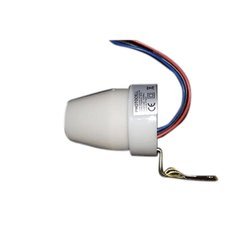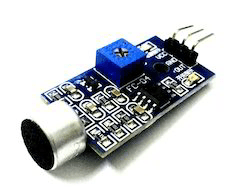As we all are living in digital technology, the one device that became an integral part of our daily activity is Sensor. Every device which we come across in our home from mobile phone to security systems at home, all are embedded with various kind of sensors. So, a sensor is a device that observes changes occurring in the parameters such as humidity, pressure, temperature, and others and sends the output to either microcontroller or microprocessor. And these sensors are basically categorized as analog and digital. Here, in this article, we would like to discuss the topics of what is an analog sensor and the types of analog sensors?
What are Analog Sensors?
Analog sensors are the devices that produce analog output in correspondence to the quantity being calculated. These sensors also observe the change in external factors such as light intensity, speed of the wind, and solar radiation, and others. And the output ranges between 0V to 5V. Here, Logic 1 corresponds to the voltage level of 3.5V to 5V and Logic 0 corresponds to the voltage level of 0V to 3.5V.
For instance, the temperature range of a liquid can be known either by thermocouple or thermometer that constantly responds to temperature change either the liquid is cooled or heated.
Types of Analog Sensors
Analog sensors are classified as many types and they are of:
- Accelerometers
- Light sensors
- Sound sensors
- Pressure sensors
- Analog temperature sensors
Let’s have a brief discussion on all these types of analog sensors
Accelerometers
The name itself indicates that these are the type of analog sensors where those can be utilized to detect changes in acceleration applied on the sensor. Acceleration also corresponds to the change in the values of velocity, vibration, position, and tilt by detecting motion. These accelerometers deliver two kinds of data.
- The static force exerted on the sensor because of gravity that results to know the change in orientation.
- Force exerted on the sensor results in a change in the movement.
The foremost benefit of implementing the accelerometer sensor is biometrics. The general usage of accelerometer sensors is in vibration motion and in screen orientational changes. But the drawback in these devices is inter-device variations.
Light Sensors
These are the kind of photoelectric devices where the detected light energy is converted to that of electrical energy which means that photons are converted as electrons. Light sensors are mostly helpful to find out and react for various light levels such as in machines, switches, and other appliances. These are further classified depending on the collected current or hold voltage based on the levels of light. Mostly, light sensors are implemented for robotic intelligence and motion lights. Even these devices hold the ability to detect light rays not visible for humans such as UV rays, infrared, and X-rays.

light-analog-sensor
The types of light sensors are:
- Photovoltaic – These are also termed as solar cells. These sensors act in response to light levels either by generating voltage or current and stored in silicon cells for further usage. These are minimal and produce only minimal wattages and for high currents, these will be available as panels.
- Light-dependent – This type of light sensor is mainly utilized for gauging purposes and reacting for light levels. They operate as automatic switches for various devices. These devices come under the classification of photoresistors as the reason their resistance value enhances as the light levels go up.
- Photo Diode – Devices such as remote controls, cameras, and video recorders utilize photodiodes to identify light levels. This device acts in response to various infrared levels and performs as switches. In general, even for minimal light changes, these devices deliver minimal current.
- Proximity – In correspondence to the infrared light changes, proximity sensors detect either the closeness of another item or detects motion. These are helpful in robotic machines to pass through obstacles and keep away from object bumpings.
Sound Sensors
Sound sensors are considered as the modules to find out sound waves by the intensity and converting those into electrical signals. It means that the amplitude levels of the sound wave are converted to electrical voltage. Sound sensors are used in the applications of door alarms, music systems, burglar alarms, computers, and many others.

sound-sensor
Pressure Sensor
Pressure sensors are the devices used for the measurement of pressure levels of either liquids or gases. This device is even utilized to measure a few of the other parameters like the altitude, flow of either gas or liquid, and water levels. Pressure sensors are also termed as piezometers, pressure transmitters, pressure indicators, and manometers.
Few of the pressure sensors also operated as pressure switches, which gets ON or OFF for corresponding pressure levels. For instance, the water pump can be handled through pressure switch in the way when the switch is in ‘ON’ condition, water will be released thus decreasing the pressure levels in the reservoir. These are classified as
- Absolute pressure sensors
- Differential pressure sensors
- Gauge sensors
- Sealed gauge sensors
Analog Temperature Sensor
These sensors deliver analog output voltage or current signals in linear to the temperature levels. The usage of these devices is so simple, and no need for complicated circuits to construct. The accuracy of output ranges from +10C to -10C. These are also called as thermistors. when the temperature rate enhances, then the value of electrical resistance also gets increased. In the same way, if the temperature rate is reduced, then the resistance value declines. Also, low power usage of these analog temperature sensors reduces the power utilization of a system, self-heating, and even the construction is also so simple.
Applications of Analog Sensors
As there are various classifications in analog sensors, there is an extensive range of applications in many industries of these devices. Few of the applications are:
- Parking sensors
- Object alignments
- Mobile phones
- Industrial fabrications
- Automobiles
- Robotics
FAQs
1). What is called an analog signal?
An analog signal generally corresponds to linearity. Analog systems are utilized when the output levels of either current or voltage have to be proportional as per input values. These systems have unlimited variability in nature.
2). What are the benefits of analog signals?
Analog signals have less distortion and less quantization noise. And also, extensive performance even in high load conditions.
3). What are the advantages of analog sensors?
Analog sensors are the devices that produce analog output in correspondence to the quantity being calculated. The quantity which is measured can be temperature, pressure, force, light, and others.
4). What are the sensors that produce analog output?
Those are flex sensors, temperature sensors, UV light sensors, microphones, force-sensitive sensors, and photocells.
5). Is a phone digital or analog?
A phone operates on both analog and digital signals. Analog signals are used for transmission and reception of communication signals whereas the data inside the analog is digital in nature.
So, this all about the concept of analog sensors. Furthermore, people implement analog sensors in various practical applications in both industrial and commercial domains. With the advancement in the scope of technology, the progression of analog sensors also enhances. Know more about the real-life examples of analog sensors and how their operation is based on?